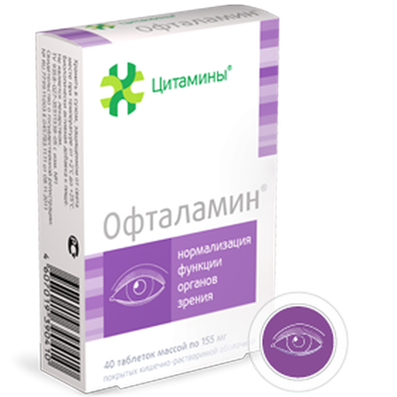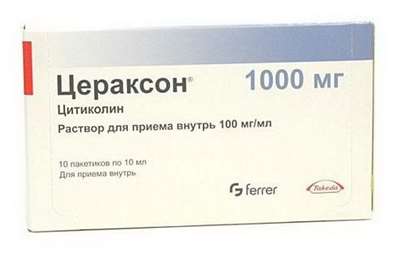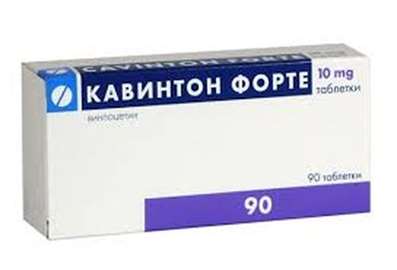Instruction for use: Arbidol
I want this, give me price
Arbidol 100mg 20 pills
Arbidol 200mg 10 pills
Dosage form: Capsules; Powder for suspension for oral administration; Substance-powder; Coated tablets; Film-coated tablets
Active substance: Umifenovirum
ATX
J05AX13 Umifenovir
Pharmacological groups:
Antiviral [Other immunomodulators]
Antiviral [Antiviral (excluding HIV) means]
The nosological classification (ICD-10)
A08.0 Rotavirus enteritis: Rotavirus gastroenteritis; Rotavirus infection; Acute intestinal infection due to rotavirus; Acute intestinal infection of rotavirus etiology
B00.9 Herpetic infection, unspecified: Herpes face; Herpes mucous membranes; Herpes-viral infections; Herpes-viral infections of various localizations; Herpetic infection; Herpetic infections; Herpetic lesions; Latent herpetic infection; Neonatal herpes; Recurrent herpetic infection; Chronic recurrent herpesvirus infection; Chronic recurrent herpetic infection; Acute herpetic disease of the mucous membranes; Recurrent herpes
J06 Acute upper respiratory tract infections of multiple and unspecified locations: Frequent colds of viral diseases; Infections of ENT organs; Acute respiratory illness of influenza nature; Pain for colds; Acute catarrhal disease; Cold; Colds; Colds; Respiratory infection; Seasonal catarrhal disease; Seasonal colds; Pain in infectious and inflammatory diseases of the upper respiratory tract; Bacterial infections of the upper respiratory tract; Bacterial infections of the respiratory system; Viral respiratory disease; Viral respiratory tract infections; Inflammatory disease of the upper respiratory tract; Inflammatory diseases of the upper respiratory tract; Inflammatory diseases of the upper respiratory tract with difficult to separate sputum; Inflammatory respiratory disease; Secondary infections for colds; Difficult sputum separation in acute and chronic respiratory diseases; Upper respiratory tract infections; Infections of the upper respiratory tract; Respiratory tract infections; Respiratory and lung infections; Infectious-inflammatory diseases of the upper respiratory tract; Infectious-inflammatory diseases of the upper respiratory tract and ENT organs; Infectious-inflammatory diseases of the upper respiratory tract in adults and children; Infectious-inflammatory diseases of the upper respiratory tract; Infectious inflammation of the respiratory tract; Respiratory tract infection; Qatar upper respiratory tract; Catarrh of the upper respiratory tract; Catarrh of the upper respiratory tract; Catarrhal phenomena from the upper respiratory tract; Cough in diseases of the upper respiratory tract; Cough for colds; ARVI; ARI; ARI with phenomena of rhinitis; Acute respiratory infection; Acute infectious-inflammatory disease of the upper respiratory tract; Acute respiratory disease; Persecution in the throat or nose; Respiratory and viral infections; Respiratory diseases; Respiratory infections; Recurrent respiratory tract infections; Secondary infections with influenza; Influenza states; Feverish conditions for influenza
J10 Influenza caused by an identified influenza virus: Influenza A; Influenza B; Influenza A type; Influenza A of type B
J18 Pneumonia without specification of pathogens: Alveolar pneumonia; Community-acquired pneumonia atypical; Community-acquired pneumonia non-pneumococcal; Pneumonia; Inflammation of the lower respiratory tract; Inflammatory lung disease; Shared pneumonia; Respiratory and lung infections; Infections of the lower respiratory tract; Cough with inflammatory diseases of the lungs and bronchi; Croupous pneumonia; Nosocomial pneumonia; Exacerbation of chronic pneumonia; Acute community-acquired pneumonia; Acute pneumonia; Focal pneumonia; Pneumonia abscessing; Pneumonia bacterial; Pneumonia croupy; Pneumonia of focal; Pneumonia with difficulty in sputum discharge; Pneumonia in AIDS patients; Pneumonia in children; Septic pneumonia; Chronic Obstructive Pneumonia; Chronic pneumonia; Lymphoid interstitial pneumonia
J22 Acute respiratory infection of lower respiratory tract, unspecified: Bacterial respiratory disease; Bacterial infections of the lower respiratory tract; Bacterial infections of the respiratory system; Viral respiratory disease; Viral respiratory tract infections; Inflammatory respiratory disease;; Difficult sputum separation in acute and chronic respiratory diseases; Respiratory tract infections; Respiratory and lung infections; Lower respiratory tract infections; Infections of the lower respiratory tract; Infectious inflammation of the respiratory tract; Infectious diseases of the respiratory tract; Infectious diseases of the lungs; Infectious diseases of the respiratory system; Respiratory tract infection; Cough for colds; Pulmonary infection; Acute respiratory tract infection; Acute respiratory viral infection; Acute inflammatory airway disease; Acute respiratory disease; Respiratory infection; Respiratory and viral infections; Respiratory syncytial viral infection in young children; Respiratory diseases; Respiratory infections
J42 Chronic bronchitis, unspecified: Recurrent bronchitis; Asthmatic bronchitis; Asthmatic bronchitis; Bronchitis chronic; Inflammatory respiratory disease; Disease of the bronchi; Qatar smoker; Cough with inflammatory diseases of the lungs and bronchi; Exacerbation of chronic bronchitis; Chronic bronchitis; Chronic Obstructive Pulmonary Diseases; Chronical bronchitis; Chronic bronchitis of smokers; Chronic spasmodic bronchitis; Allergic bronchitis; Bronchitis allergic
T81.4 Infection associated with the procedure, not elsewhere classified: Post-operative infections; Postoperative wound infection; Postoperative infection
Z25.1 The need for immunization against influenza
Z98.8 Other specified post-surgical conditions: Purulent complications in the postoperative period; Suppurative complications of surgery; Postoperative liver dysfunction; Postoperative vomiting; Postoperative complications; Postoperative period; Early postoperative period
Composition
Capsules - 1 caps.
active substance: Umifenovir (umifenovir hydrochloride monohydrate in terms of umifenovir hydrochloride) 50/100 mg
Auxiliary substances: potato starch - 15.07 / 30.14 mg; MSC - 27.88 / 55.76 mg; Silicon dioxide colloid (aerosil) - 1/2 mg; Povidone (Kollidon 25) - 5.05 / 10.1 mg; Calcium stearate - 1/2 mg
Capsule hard gelatinous: titanium dioxide (E171); Quinoline yellow (E104); The colorant "Sunset Sunset" is yellow (E110); Methylparahydroxybenzoate; Propyl parahydroxybenzoate; acetic acid; gelatin
or
Titanium dioxide (E171); Quinoline yellow (E104); The colorant "Sunset Sunset" is yellow (E110); gelatin
Description of dosage form
Dosage 50 mg - capsules ¹3 yellow; Dosage of 100 mg - capsules ¹1 white, cap of yellow color. Contents of capsules - a mixture containing granules and powder from white to white with a greenish-yellowish or creamy hue of color.
Pharmachologic effect
Mode of action - antiviral, immunostimulating.
Pharmacodynamics
An antiviral agent. Specifically suppresses influenza A and B viruses (Influenzavirus A, B) in vitro, including the highly pathogenic subtypes A (H1N1) pdm09 and A (H5N1), as well as other viruses that cause acute respiratory syndrome (coronavirus associated with severe acute respiratory syndrome, rhinovirus, adenovirus , Respiratory-sensitizing virus and parainfluenza virus). By the mechanism of antiviral action refers to the inhibitors of fusion (fusion), interacts with the hemagglutinin of the virus and prevents the fusion of the lipid envelope of the virus and cell membranes. Has a moderate immunomodulatory effect, increases the body's resistance to viral infections. Has interferon-inducing activity - in a study in mice, the induction of interferons was noted already after 16 hours, while high titers of interferons persisted in the blood up to 48 hours after administration. Stimulates cellular and humoral immune responses: increases the number of lymphocytes in the blood, especially T cells (CD3), increases the number of T-helpers (CD4), without affecting the level of T-suppressors (CD8), normalizes the immunoregulatory index, stimulates the phagocytic function of macrophages And increases the number of natural killers (NK cells).
Therapeutic efficacy in viral infections is manifested in a reduction in the duration and severity of the course of the disease and its underlying symptoms, as well as in reducing the incidence of complications associated with a viral infection and exacerbations of chronic bacterial diseases. Refers to low-toxic drugs (LD50> 4 g / kg). Does not have any negative effects on the human body when administered orally at recommended doses.
Pharmacokinetics
Quickly absorbed and distributed to organs and tissues. Cmax in blood plasma when taken in a dose of 50 mg is achieved after 1.2 hours, at a dose of 100 mg - after 1.5 hours Metabolized in the liver. T1 / 2 is 17-21 hours. About 40% is excreted unchanged, mainly with bile (38.9%) and in an insignificant number of kidneys (0.12%). During the first day, 90% of the administered dose is discharged.
Indication of the Arbidol
Prevention and treatment in adults and children: influenza A and B, other acute respiratory viral infections;
Complex therapy of acute intestinal infections of rotavirus etiology in children over 3 years old, chronic bronchitis, pneumonia and recurrent herpetic infection;
Prevention of postoperative infectious complications.
Contraindications
Increased sensitivity to umifenovir or any component of the drug;
The first trimester of pregnancy;
Children under 3 years (for a dosage of 50 mg), up to 6 years (for a dosage of 100 mg).
Application in pregnancy and breastfeeding
In animal studies, no adverse effects were observed on the course of pregnancy, development of the embryo and fetus, labor and postnatal development. The use of Arbidol® in the first trimester of pregnancy is contraindicated.
In the second and third trimester of pregnancy, Arbidol® can only be used for the treatment and prevention of influenza if the intended benefit to the mother exceeds the potential risk to the fetus. The benefit / risk ratio is determined by the attending physician.
It is not known whether Arbidol® penetrates breast milk in women during lactation. If the use of Arbidol® is necessary, breastfeeding should be discontinued.
Side effects
Rarely, allergic reactions.
If any of the side effects listed in the manual are aggravated or any other side effects not indicated in the instructions are noted, you should notify the doctor.
Interaction
At the appointment with other drugs, no negative effects were noted.
Dosing and Administration
Inside, before eating.
Single dose: children from 3 to 6 years - 50 mg, from 6 to 12 years - 100 mg (1 capsule to 100 mg or 2 capsules to 50 mg), over 12 years and adults - 200 mg (2 capsules 100 mg or 4 capsules of 50 mg each).
For nonspecific prevention and treatment of influenza and other acute respiratory viral infections in children and adults
Nonspecific prevention
During the epidemic of influenza and other SARS: children from 3 to 6 years - 50 mg, from 6 to 12 years - 100 mg, over 12 years and adults - 200 mg 2 times a week for 3 weeks.
In direct contact with patients with influenza and other SARS: children from 3 to 6 years - 50 mg, from 6 to 12 years - 100 mg, over 12 years and adults - 200 mg once a day for 10-14 days.
Treatment of influenza and other ARVI
Children from 3 to 6 years - 50 mg, from 6 to 12 years - 100 mg, over 12 years and adults - 200 mg 4 times a day (every 6 hours) for 5 days.
Complex therapy of acute intestinal infections of rotavirus etiology in children older than 3 years
From 3 to 6 years - 50 mg, from 6 to 12 years - 100 mg, over 12 years - 200 mg 4 times a day (every 6 hours) for 5 days.
Complex therapy of chronic bronchitis, pneumonia, recurrent herpetic infection
Children from 3 to 6 years - 50 mg, from 6 to 12 years - 100 mg, over 12 years and adults - 200 mg 4 times a day (every 6 hours) for 5-7 days, then a single dose 2 times a week Within 4 weeks.
Prevention of postoperative infectious complications
Children from 3 to 6 years - 50 mg, from 6 to 12 years - 100 mg, over 12 years and adults - 200 mg for 2 days before the operation, then on 2 and 5 days after the operation.
Overdose
Not described.
Special instructions
It is necessary to follow the recommended in the instructions scheme and the duration of the drug. If you miss a dose of the drug - the missed dose should be taken as soon as possible and continue the course of taking the drug according to the scheme started.
Influence on the ability to drive vehicles and mechanisms. It does not show central neurotropic activity and can be used in medical practice in persons of various professions, including Requiring increased attention and coordination of movements (including transport drivers, operators).
Release form
Capsules, 50 and 100 mg. In the outline of the cell, 5 or 10 pcs. 1, 2 or 4 contour packs in a pack of cardboard.
Manufacturer
OJSC "Pharmstandard-Leksredstva".
Conditions of supply of pharmacies
Without recipe.
Storage conditions of the drug Arbidol
At a temperature not exceeding 25 ° C.
Keep out of the reach of children.
Shelf life of the drug Arbidol
3 years.
Do not use after the expiry date printed on the package.

 Cart
Cart





